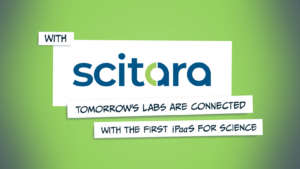In modern labs, digital transformation isn’t just about adopting software—it’s about creating an ecosystem where systems, devices, and scientists can interact in real time. Scitara DLX (Digital Lab Exchange) delivers this by serving as the integration backbone of the Lab Digital Core.
DLX enables seamless, secure, and scalable communication between lab instruments, informatics platforms (like Empower, LIMS, ELNs), and enterprise applications. Its value lies not just in connectivity, but in how it enables automated data flow, contextual data processing, and workflow orchestration across the lab landscape.
The Lab Digital Core: DLX at the Heart
DLX operates as an iPaaS for Science™—an Integration Platform as a Service uniquely built for regulated and research-driven lab environments. Its technical architecture includes:
- Microservices-based integration engine
- REST and SOAP API connectors
- Event-driven triggers and message brokers
- Audit trail and compliance tracking modules
- Pre-built connectors for platforms like Empower, LabWare, Chromeleon, and more
This modularity allows DLX to adapt to heterogeneous IT environments typical in pharma, biotech, and manufacturing labs.
Key Technical Value Opportunities
1. Event-Driven Automation
DLX listens for specific lab events—such as “sample signed off” or “results verified”—and automatically triggers downstream actions. For example:
- Empower signs off a system suitability test → DLX captures results
- DLX parses and checks against predefined limits
- If a failure is detected, DLX sends automated alerts and logs the event
This removes manual checkpoints, shortens turnaround time, and reduces compliance risk.
.
2. Smart Data Aggregation & Routing
DLX can normalize and contextualize data from:
- Chromatography systems (e.g., Empower)
- LIMS and ELNs
- SCADA and MES platforms
Using its configurable data mapping and transformation rules, DLX ensures data from diverse sources is formatted consistently before aggregation into a central data lake or analytics platform (e.g., Spotfire, Tableau, AWS, Azure).
This enables:
- Real-time trending (e.g., dissolution profiles, assay yields)
- Automated batch documentation population
- Instrument performance tracking (e.g., column usage, drift analysis)
3. Audit-Ready Compliance
DLX is built for GxP environments, with:
- Immutable, timestamped logs of all data transactions
- Role-based access control
- Integrated support for 21 CFR Part 11 compliance
- Audit trail for all system messages and user actions
From Point Integrations to Workflow Intelligence
Traditional point-to-point integrations often become brittle and hard to maintain. DLX’s architecture allows for:
- Scalable orchestrations (e.g., multi-step workflows triggered by a single event)
- Real-time feedback loops (e.g., reject data automatically if it doesn’t meet acceptance criteria)
- Interactive workflows with user prompts and escalations
These technical capabilities support value targets such as:
- 30–50% reduction in analyst time per batch
- Real-time quality monitoring (zero-lag on system suitability)
- Centralization of multi-site lab operations
Setting the Stage for Specific Value Targets
This blog explores the platform layer of value—how DLX establishes the digital backbone that empowers labs to achieve specific, measurable outcomes, such as:
- Boosted analyst productivity
- Shorter sample turnaround times
- Improved first-time-right rates
- Quicker investigation closures
- More efficient tech transfer and method validation
Together, these improvements contribute to a more agile, data-driven lab environment—accelerating digital transformation and maximizing operational value.
Final Word: Engineered for Scientists, Built for Scale
DLX isn’t just a backend tool—it’s a transformation layer designed with the lab in mind. Whether you’re a bench scientist, lab manager, or data architect, DLX makes your job easier, your data cleaner, and your science faster.
